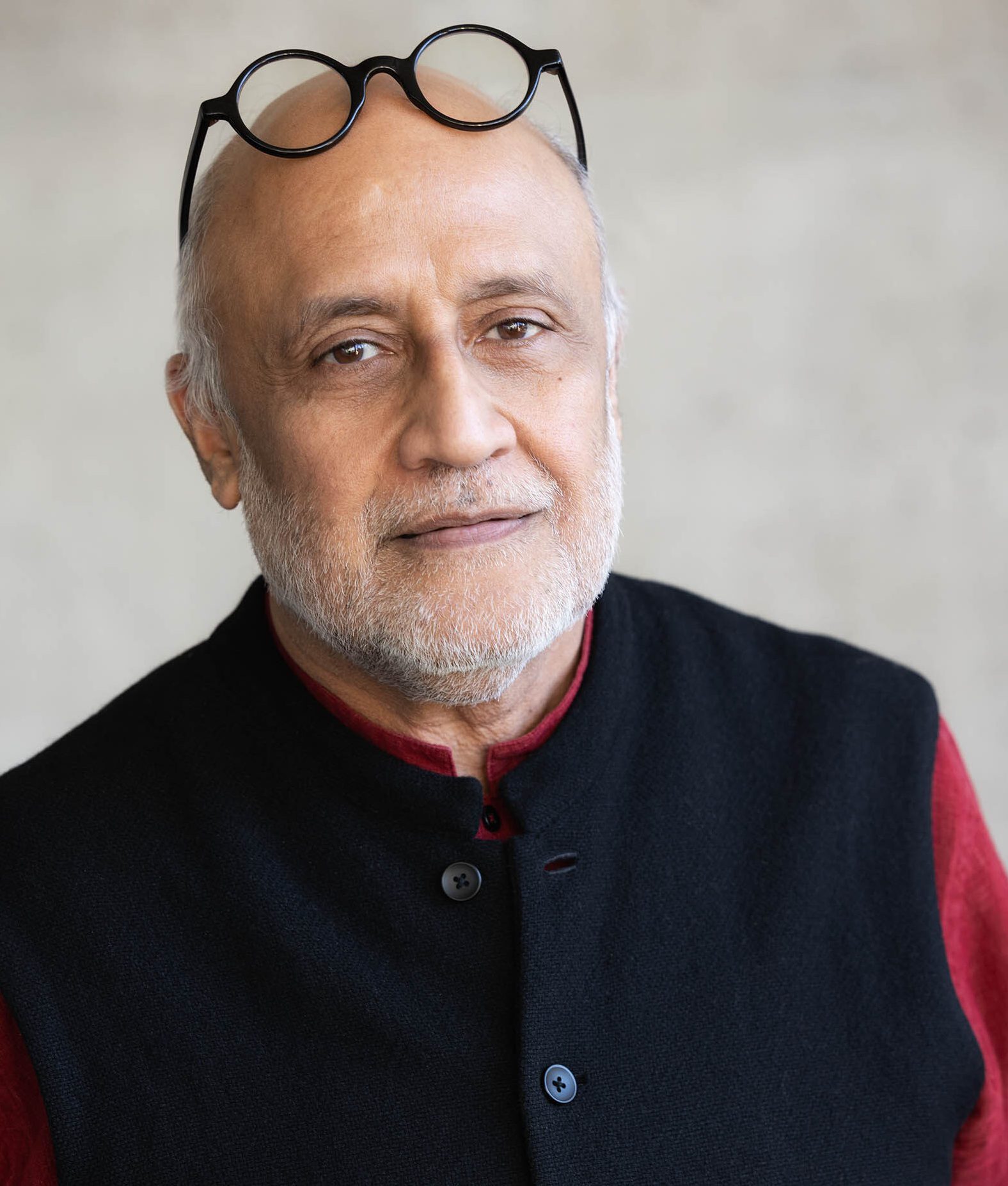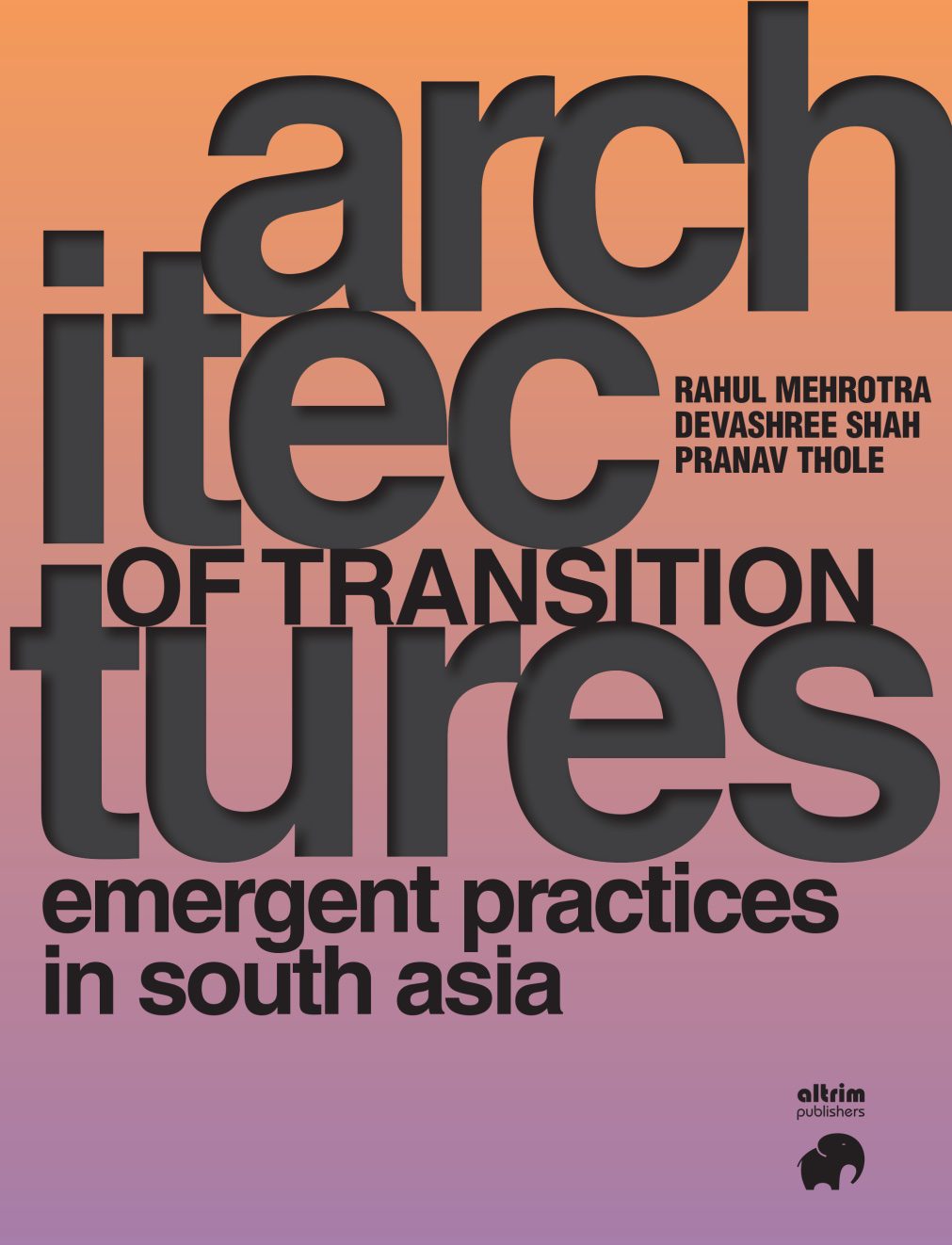The Mittal Institute’s State of Architecture in South Asia project is hosting a conference in New Delhi from December 14-16, 2023, titled Architectures of Transition – Frameworks and Practices in South Asia. Architects from the entire region — Afghanistan, Bangladesh, Bhutan, India, Nepal, Sri Lanka, and Pakistan (virtually) — will come together to discuss the work and practice in South Asia. The conference will put theoreticians, academics and practitioners in dialogue with each other, bridging the schism that exists between the academy and practice.
Rahul Mehrotra, John T. Dunlop Professor in Housing and Urbanization at Harvard University’s Graduate School of Design, discusses the conference and his forthcoming book based on the Emergent Practices in South Asia project.

Mittal Institute: What led you to conceptualize the project ‘The State of Architecture in South Asia’? How has the response been?
Rahul Mehrotra: There were many factors that led to the conceptualization of this project and the associated lecture series. The first was the gap that exists in the discussion around architecture and urbanism across South Asia. This became clearer when, in 2022, the Museum of Modern Art (MoMA) in New York held an exhibition titled The Project of Independence: Architectures of Decolonization in South Asia, 1947-1985 on South Asian architecture which extensively covered the early modernist period—or the period when several nations in the region had gained independence from colonial rule and were beginning to articulate their identities. It deliberately did not attempt to cover the period after 1985, thus underscoring the fact that there truly is very little documentation about the timeframe from around 1985 to the present.
Secondly, and on a more personal note, in 2016, with my colleagues Ranjit Hoskote and Kaiwan Mehta, we mounted an exhibition called The State of Architecture: Practices and Processes in India, held at the National Gallery of Modern Art in Mumbai. A two-day conference, one that focused on South Asia, rounded off the exhibition. The conference brought together architects from all the countries in the region including Afghanistan, Bangladesh, Bhutan, Nepal, and Pakistan. The common issues, struggles, and emergent conditions across these nations became increasingly vivid, triggering off incredibly productive discussions and infusing a collective motivation to consider extending this project. Interestingly, the Lakshmi Mittal and Family South Asia Institute at Harvard University (LMSAI) was one of the supporters for this conference and so it is rather appropriate that we are now, with their renewed support, extending these conversations in the form of the current project.

Mittal Institute: What do you foresee will be the learnings from the conference in Delhi in December on ‘Architectures of Transition – Frameworks and Practices in South Asia’?
Rahul Mehrotra: The Architectures of Transition has six major components: A lectures series, publications, a conference, a travelling exhibition, podcasts, and a digital archive to capture the ongoing research. The project is cognizant of the fact that some discussions about architecture and the different modes of engagement in practice are most productive within a generation while others are more productive across generations of practitioners. Thus, some components—such as the lecture series—are structured to create intra-generational conversations while others—like the conference, podcasts, publications, and the events that will surround the travelling exhibition—will be designed to foster inter-generational conversations. While these forms of categorization cannot be absolute or complete, we hope they will contribute towards contextualizing the issues within a temporal scale that is productive for the academics and professionals in the region and elsewhere.
Mittal Institute: Can you tell us a bit about some of the architects from countries across South Asia that will be represented at this conference?
Rahul Mehrotra: There will be architects from all the countries in South Asia who will cover an incredible breath of the types of practices we see emerging in the region. We have practitioners who work with the state and others who self-initiate work through community organizing etc. There will be architects who have dedicated decades of their practice in repair of historic environments as well as communities ravaged by conflict and disasters. We will also have practitioners who are curators and researchers and others who are innovators in building techniques. So, in short, through the discussions in the conference we hope to represent accurately the many ways of making and building in South Asia.
Mittal Institute: From inception to where it is now, how has the process been of getting this project, including the lecture series, off the ground?
Rahul Mehrotra: The lecture series is conceived as having three components to facilitate both inter- and intra- generational conversations among students, practitioners, and academics in South Asia, organized over three years. The book that has emerged from this is titled Emergent Architectural Practices in South Asia. Its intent is to create a platform for emerging practices to articulate their position as well as expand their network of peers to collectively push the intellectual boundaries of the field. The second component which is the conference in December 2023 titled Reflecting on Architectural Practices in South Asia, will involve practitioners who have been in the field for over four decades and are well situated to reflect on their trajectories. Here, the intent is to present and archive shifting issues as well as engage with what these practices have experienced over the decades. It is hoped that these engagements will not only be helpful for younger practitioners but will also facilitate research and a broader theoretical discourse about practice in South Asia.
Mittal Institute: What’s next for the ‘State of Architecture in South Asia’ project?
Rahul Mehrotra: The next stage, we hope, will be asking architects of a generation that have been in practice for four decades to reflect on what they see in the generations following them – how they with hindsight see the value of what is being produced now in South Asia. It will be about an older generation reflecting on the work of younger architects – this will also have great value as an archive as with changing conditions in South Asia over four or five decades clearly the forms of engagement with making architecture has also shifted enormously.
Mittal Institute: Can you tell us about the book based on this project which is to be released on December 14, 2023?
Rahul Mehrotra: The book, titled “Architectures of Transition: Emergent Practices in South Asia,” co-authored by Devashree Shah, Pranav Thole, and myself, and published by Altrim Publishers, originates from the ‘Emergent Practices in South Asia’ lecture series. It meticulously documents 41 emerging architectural practices in South Asia that demonstrate a robust commitment to shaping architecture, landscape, and public infrastructure. The objective of both the publication and lecture series is to capture the current dynamics of the region, creating a platform for dialogue among practitioners and exploring the diverse approaches to practice. With a focus on young architects, the initiative delves into the opportunities and challenges encountered by contemporary and up-and-coming professionals.

This endeavor constitutes a thorough examination of the architectural panorama in South Asia, providing insights into aspects such as patronage, methodologies, emerging technologies, and construction techniques. Moreover, it illuminates how architects today approach the humane and social dimensions of architecture, marked by participatory frameworks. By concentrating on architectures of transition, we bring out the legitimacy of various modes of engagement, acknowledging intersections and collaborations between different cultures, representational methods, and knowledge creation and dissemination.
